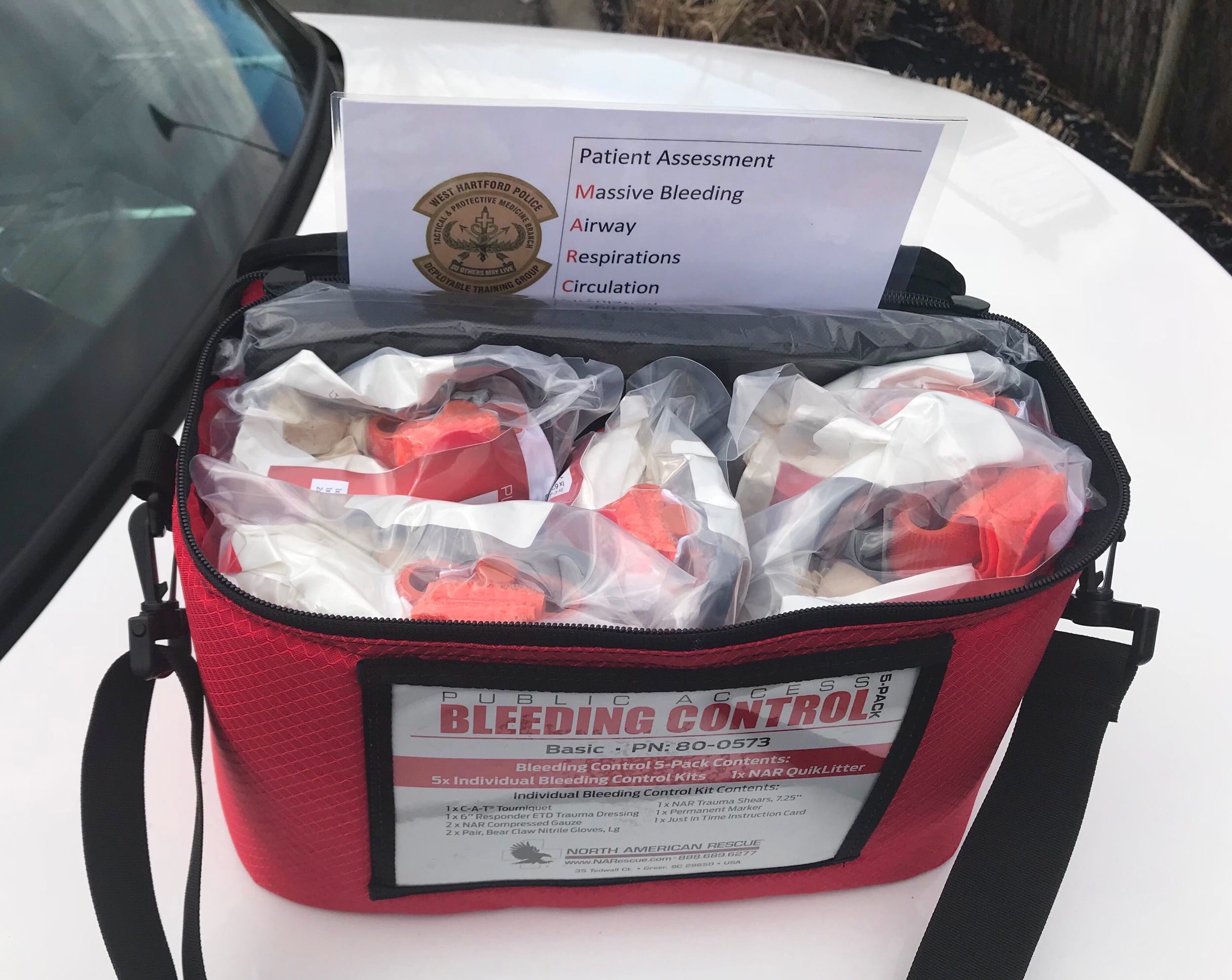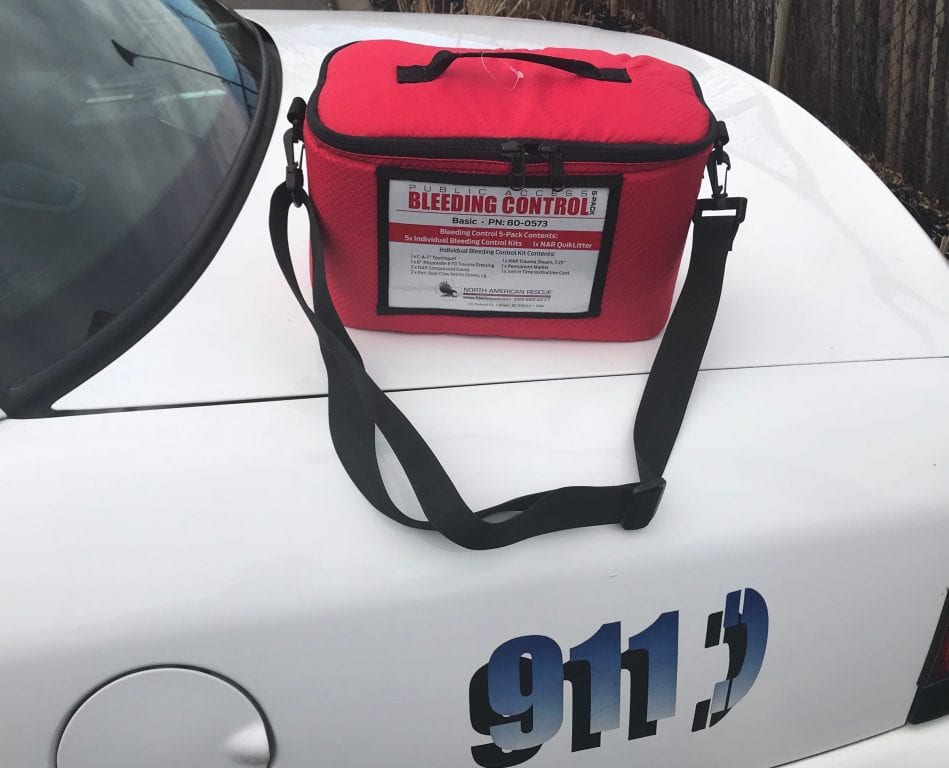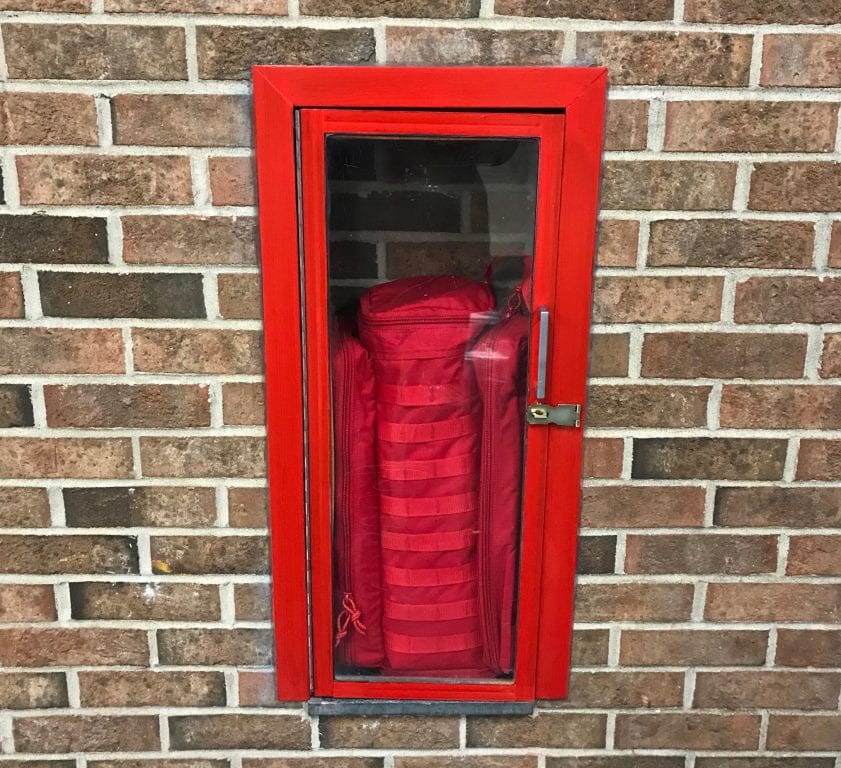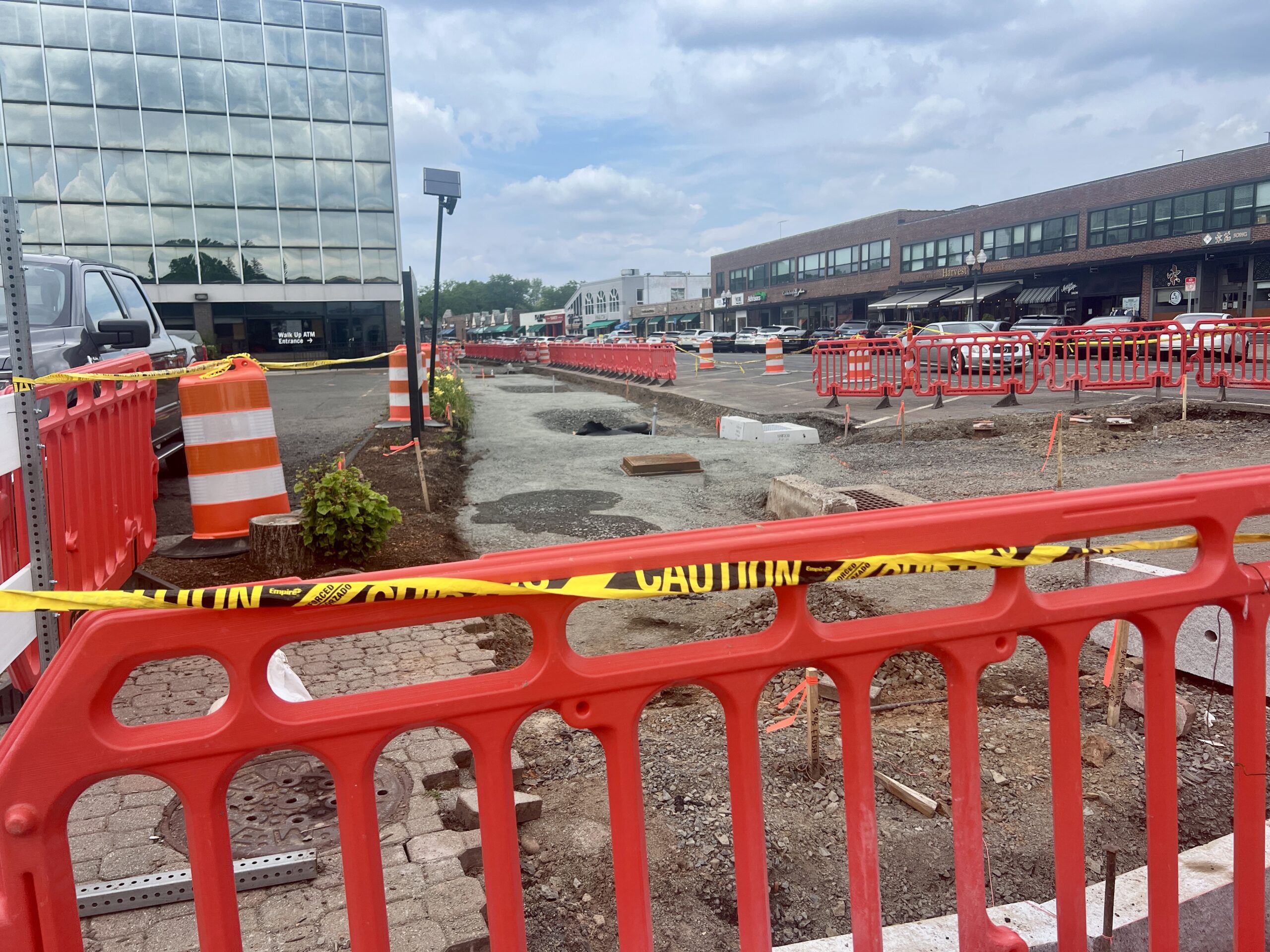Communication and Collaboration: The Key to School Safety in West Hartford

Audio By Carbonatix

Bleed bags have been distributed to all West Hartford Public Schools, and according to Director of Security Eric Dency contain what's needed to save a life in a crisis situation. Courtesy photo
The West Hartford Board of Education received the ‘Safe School Climate and Discipline Report’ at its meeting Tuesday night.

Bleed bags have been distributed to all West Hartford Public Schools, and according to Director of Security Eric Dency contain what’s needed to save a life in a crisis situation. Courtesy photo
By Ryley McGinnis
At the Board of Education meeting Tuesday, two key characteristics became apparent for what school administrators see as important when it comes to school safety and discipline: communication and collaboration.
The goal is not punishment, Assistant Superintendent Andrew Morrow noted, which is why these two characteristics are so important to consider in a discussion of the Safe School Climate and Discipline Report, which details West Hartford School’s safety and discipline, looks at trends, and recommends necessary measures.
The report also breaks down disciplinary actions by race, ethnicity, and grade, and while data in West Hartford is better than the statewide average, Morrow said that the number of minority students who face disciplinary action in comparison to other students is still higher than it should be. “We recognize that kids make mistakes, and we encourage positive behavior,” said Morrow. “We’re working hard to develop communication.”
Conard High School has developed a new way to start this communication. Principal Julio Duarte told the Board how Conard partnered up with Dr. Glenn Mitoma, assistant professor of Human Rights and Education at the University of Connecticut, to start these conversations. A group of Conard students visited UConn to not only see college life but also to learn how to hold difficult conversations with their classmates, teachers, and administrators.
“The students came back really energized,” said Duarte. From this experience, Conard held a school-wide assembly, and afterward, each homeroom held a 45-minute discussion on the purpose of education where students shared their opinions and differences. Both students and moderators enjoyed this exercise, and Duarte said that they will be looking at the next steps in continuing and furthering these conversations.
Hall High School is also making strides towards more communication among students and faculty. Principal Dan Zittoun told the board how they gathered different student groups, such as English language learners, LGBTQ+ students, and students of color, to talk to faculty about their experiences at Hall High. According to Zittoun, this was an empowering experience for the staff and the students. “To get that perspective was empowering and something the staff hadn’t heard in a while,” said Zittoun.
Communication goes even further when these schools look at discipline strategies on an individual basis.
Both Zittoun and Duarte told the board how having conversations not only with the students but with the parents is key to finding solutions in some discipline cases. Duarte said that at Conard, sometimes disciplinary action will be adjusted to better benefit the student. “Sometimes instead of a four-hour detention we will set up a meeting with the school counselor,” said Duarte.
Another important characteristic of school safety discussed at the board meeting was collaboration: collaboration with West Hartford police, parents, and students to keep them safe.
Security Director Eric Dency detailed specific areas of school’s safety and security plans.

‘Bleed bags’ are accessible at West Hartford Public Schools. Courtesy photo
The first of these safety plans Dency mentioned was technology and building safety. According to Dency, they are finishing up the school-wide camera project that includes exterior and interior cameras throughout every school. Additionally, iPads that were given to the West Hartford Police Department allows police to monitor events on the fields and in the schools in real time.
According to Dency, all schools have received bleed control kits. These kits hold tourniquets, chest seals, gauze, and “anything you need to potentially save a life in a crisis situation” said Dency. “These kits are the next evolution in the medical phase.”
Besides technology advances, another important part of safety and security planning is working with students, parents, and the police to keep students and faculty educated and prepared for emergency situations. Dency emphasized the importance of keeping the students active and engaged in drills and conversation. One method to incite this conversation is “table-top exercises.” In these exercises, students are given a scenario dealing with safety and security, and they brainstorm how they would handle that situation.
“We didn’t want to disrupt student’s routines or days,” said Superintendent Tom Moore, “but now we know we have to.” Preparation is critical, and teachers have to make decisions in tough situations about their kids, and it is up to the kids and teachers to decide how to handle them, said Moore.
“If students trust that we want to do what’s best, then we can do that work together,” said Zittoun. “At the heart of school safety is the relationships we have with our students and that they have with adults.”
Like what you see here? Click here to subscribe to We-Ha’s newsletter so you’ll always be in the know about what’s happening in West Hartford!




[…] bags have been installed in all West Hartford Public Schools, and West Hartford Public Schools Director of Security Eric Dency said previously that they are the next evolution in the medical phase. The kits hold tourniquets, chest seals, […]